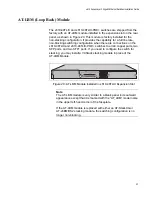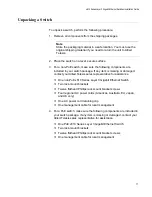
Chapter 2: Virtual Chassis Stacking
64
Stack Formation
A VCStack always contains a master plus a number of stack members. To
be part of a stack, a switch must connect to other potential stack members
via dedicated stacking ports on the VCStack stacking module located in
the rear of the switch.
Once the switches have been physically connected to form a stack,
powering all the members on automatically sets off a number of processes
that enable the stack members to detect the presence of the other stack
members and form themselves into a VCStack.
The Role of the
Stack Master
In addition to being a member of its VCStack, the stack master manages
functions such as software version control and distribution, routing
processing, and network management.
Selecting the Stack Master
The stack members are able to automatically select which switch will
become the stack master. This selection is based on two components:
1. The stack member’s priority setting.
2. The stack member’s MAC address.
The master is the switch with the lowest ‘priority setting’, or if no ‘priority
settings’ are configured, the switch with the lowest MAC address will
become the stack master. When a stack member is initially booted, its
priority value defaults to 128. Therefore if all switches retain their defaults,
then the stack master will be determined by MAC address comparison.
The stack also assigns a Stack Member-ID number to each member. This
number provides a unique reference number for switches within the stack;
it plays no part in selecting the stack master. The Stack Member-ID is the
entity used as the first digit of the three component port identifier numbers.
For example, port number 2.0.14 has the Stack Member-ID of 2.
Note
Modify your configuration scripts to match any changes you have
made to the Stack Member-ID assignments.
















































